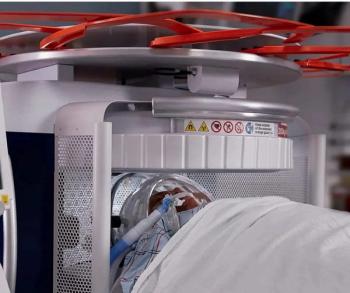Emerging research appears to affirm that the use of dynamic contrast-enhanced (DCE) in multiparametric magnetic resonance imaging (mpMRI) doesn’t offer significant value beyond biparametric MRI (bpMRI) in evaluating patients with PI-RADS 3 presentations.
For the retrospective, multi-reader study, recently published in Current Problems in Diagnostic Radiology, researchers compared prostate bpMRI vs. mpMRI assessments in 196 patients, including 49 patients who had at least one PI-RADS 3 lesion. The reviewing radiologists included a radiologist with over three years of specializing in prostate MRI, a 4th-year radiology resident with one year of prostate MRI experience and a 3rd-year radiology resident with experience in general abdominal MRI, according to the study.
The study authors found no significant difference between bpMRI and mpMRI with respect to the diagnostic assessments of PI-RADS 3 lesions by the reviewing radiologists. They also noted “excellent” intra-reader agreement between bpMRI and mpMRI.
“This finding supports the growing role of bpMRI as a reliable alternative for initial evaluation and follow-up, especially in resource-limited settings or for patients contraindicated for contrast administration,” wrote lead study author Francesca Annibale, M.D., who is affiliated with the Unit of Radiology at the Santissima Annunziata Hospital in Chieti, Italy, and colleagues.
Experience level was a significant factor though in prostate MRI interpretation, according to the researchers. The senior reviewing radiologist had an AUC of 76.7 percent, an 89.8 percent sensitivity rate and a 64.1 percent specificity rate for detecting prostate cancer (PCa) in this patient population.
While the 4th-year resident offered a higher specificity rate (79.3 percent) than the senior radiologist, this resident had over a 40 percent lower sensitivity rate (49 percent) and a lower AUC (63.7 percent). The 3rd-year resident had a 36.7 percent sensitivity rate, a 62.8 percent specificity rate and a 50.4 percent AUC, according to the researchers.
“This observation aligns with prior evidence highlighting that expertise substantially impacts PI-RADS application, particularly in ambiguous scenarios such as category 3 lesions,” added Annibale and colleagues.
Three Key Takeaways
- bpMRI performs comparably to mpMRI for PI-RADS 3 lesions.
The study found no significant diagnostic difference between biparametric MRI (bpMRI) and multiparametric MRI (mpMRI) for evaluating PI-RADS 3 prostate lesions, supporting bpMRI as a reliable, contrast-free alternative, which may be particularly useful in resource-limited or contrast-contraindicated cases.
- Reader experience significantly impacts diagnostic accuracy.
The senior radiologist demonstrated markedly higher accuracy, sensitivity, and AUC compared to radiology residents, reinforcing that expertise plays a key role in interpreting PI-RADS 3 lesions and mitigating diagnostic variability.
- Lesion location influences interpretive performance.
Accuracy was substantially higher for transition zone lesions than for peripheral zone lesions across all readers, a finding that may be due to a confounding overlap of inflammatory and malignant imaging features on T2-weighted and diffusion sequences.
Prostate lesion location had a significant impact upon the accuracy of the reviewing radiologists. While the senior radiologist identified all 34 transition zone lesions on bpMRI, this radiologist’s accuracy dropped to 33 percent for peripheral zone lesions. The study authors noted that the radiologist residents also had low accuracy rates (20 percent and 13 percent respectively) for identifying peripheral zone lesions.
“This may be attributed to the known overlap between inflammation-related changes and cancer features, which complicates PI-RADS attribution on T2-weighted and diffusion sequences,” posited Annibale and colleagues.
(Editor’s note: For related content, see “What a New Meta-Analysis Reveals About the PI-RADS v2.1 System for Prostate MRI,” “Multicenter Study Finds Abbreviated MRI Non-Inferior to mpMRI for csPCa Detection” and “MRI-Based Deep Learning Model Bolsters Prediction of PI-RADS 3 and 4 Lesions.”)
Beyond the inherent limitations of a single-center retrospective study, the authors conceded potential bias due to a lack of histopathologic confirmation for all lesions and acknowledged possible underpowering of subgroup analysis as a result of the relatively small number of PI-RADS 3 lesions.





























